The curveball was introduced to baseball in the early 1870s, and changed the face of the game. Pitchers, for the first time, threw strikes that moved across the plate and down, curving away from right-handed batters, frequently baffling hitters. But were the first curveballs thrown in a high school game thrown at Williston?
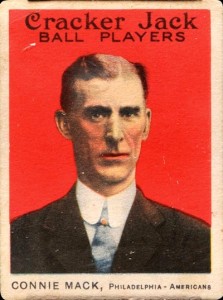 It’s a good story, related by none other than legendary Philadelphia Athletics manager Connie Mack. In his My 66 Years in the Big Leagues (Philadelphia: Winston, 1950), Mack recalls, “The first man to pitch a curve-ball game was Charles Hammond Avery, Yale 1871-75, popularly called Ham Avery, and the first curve-pitched college game was played between Yale and Harvard at Saratoga, New York, June 14, 1874, the week of the college boat races. Avery pitched for Yale and won by the score of 4-0, the first shutout ever scored against Harvard.”
It’s a good story, related by none other than legendary Philadelphia Athletics manager Connie Mack. In his My 66 Years in the Big Leagues (Philadelphia: Winston, 1950), Mack recalls, “The first man to pitch a curve-ball game was Charles Hammond Avery, Yale 1871-75, popularly called Ham Avery, and the first curve-pitched college game was played between Yale and Harvard at Saratoga, New York, June 14, 1874, the week of the college boat races. Avery pitched for Yale and won by the score of 4-0, the first shutout ever scored against Harvard.”
Mack cites as his source of information his lifelong friend, Frank Blair, Williston Seminary class of 1876, Amherst 1880. The two had grown up together in North Brookfield, Mass. Mack continues, “In his first year at Williston Academy [sic], in 1873, one of Blair’s chums was Charles Francis Carter, a left fielder who went to Yale in 1874, and the following year played on Avery’s famous Yale team. Stories began to drift back to Williston that Avery was a wonder, for he had introduced something new into baseball—a curve ball that was puzzling batters and was proving very difficult to hit.”
“One day in 1876 Blair was examining the condition of the diamond on the [Williston] campus. He spied Carter coming up the street from the station. Carter spotted Blair at the same moment, and vaulting the fence, shouted to him, ‘I can pitch curves! Avery taught me!'”
“With that, Carter took a baseball from his pocket, laid aside his overcoat, and began to show [Blair] how the mystery was performed. Carter, having passed on the instructions to Blair, picked up his overcoat and started for the train back to New Haven. He had seemingly accomplished his mission! Blair was eager to pass on the secret to the Williston pitcher. The result? Williston [Seminary] placed on the diamond the first curve pitcher used in any prep school in the United States.”
Frank Blair told the story himself — frequently. His most thorough essay was given at a Williston Alumni luncheon in June, 1940, in which he stated, “There can be no question as to who pitched the first curves at Williston: William Dennison, ’76, of Royalston, Vermont, in the Spring of 1876. I taught him. That is how I know it. This is about the only absolute certainty that can be stated about curve pitching in those early days.” Blair’s remarks, which appear to be the source of Mack’s information, are worth reading in their entirety, and are reproduced at the end of this article.
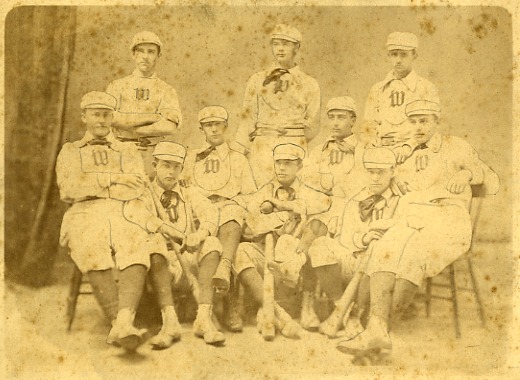
In 1942, Brooks Shackley, class of 1908, wrote Frank Blair seeking information on the early history of Williston football. Blair responded that in the 1870s, “Football was then in the dog house. I never saw a game played at Williston while I was there. In the early days of the fall term every year a rubber foot ball was brought out for a few days by the old gang, and kicked around just as a lure to the ‘buckwheats’ . . . The old gang would suddenly fall upon them and muss them up. Then the old football went back to the dog house until the next fall. That was all the football that I ever saw there. Not much like that today.”
“Base ball was the only sport. I came from Connie Mack’s section in Massachusetts, and was a fairly good player when I went to Williston. Was Captain of my class team the first year and became the Captain of the School Team in ’76, when I coached our pitcher and taught him how to pitch curves. That was the first curve pitching ever seen at Williston or in that section of Massachusetts. It was a sensation. I brought out the best base ball team that Williston had ever had up to that time. The climax came when we played a team of men from Holyoke the Saturday before graduation for a purse of $100 on the Agricultural Park in Northampton, and took the money, which looked to us then as about all the money in the world. The Holyoke rough necks were so badly cut up that they came to Easthampton the following Wednesday afternoon, after we graduated, for revenge, and we trimmed them again.”
After Amherst College, Frank Blair went into the newspaper field. He was one of the co-founders of the Worcester Telegram in 1938. Charles Carter, Yale ’78, attended Andover Theological Seminary and spent much of a distinguished career in the ministry as pastor of Immanuel Congregational Church in Hartford, Ct. Sadly, we have no further information about their teammate Billy Dennison. Upon his Yale graduation, curveball originator Ham Avery was offered contracts by professional teams, including the Boston Red Stockings, but “Avery, a Skull & Bones Society blueblood, thought professional baseball beneath him and demurred.” [John Thorn, Baseball in the Garden of Eden (Simon & Schuster 2012), p. 174]. Avery’s scruples did not prevent his appearing as a professional umpire. He became an attorney in Cincinnati. Connie Mack was inducted into the Baseball Hall of Fame in 1937.
And what of the claim by Blair and Mack that the curveball was a Williston “first?” Perhaps to his credit, Blair states only that it was the “first curve pitching seen . . . in that part of Massachusetts.” Mack is not so reticent. Axel Bundgaard, in his groundbreaking Muscle and Manliness: the Rise of Sport in American Boarding Schools (Syracuse University Press, 2005), repeats Mack’s story, and can find no competing claim.
Here is Frank Blair’s most complete account (Click the images to enlarge them):
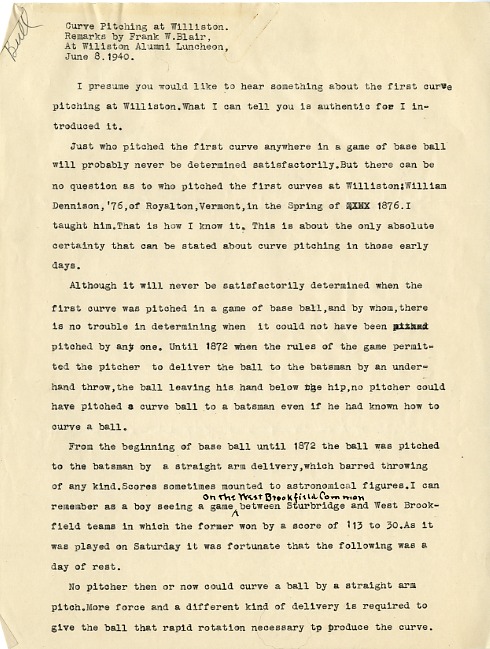


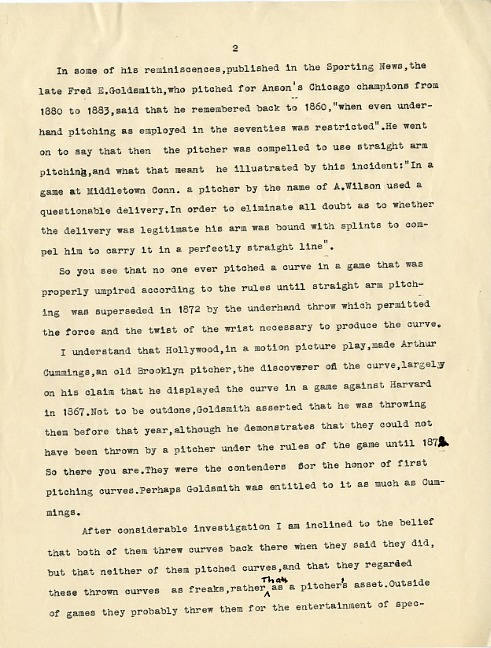
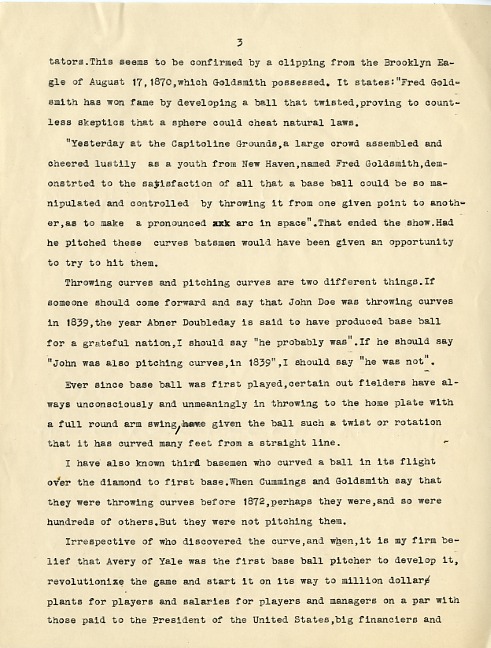
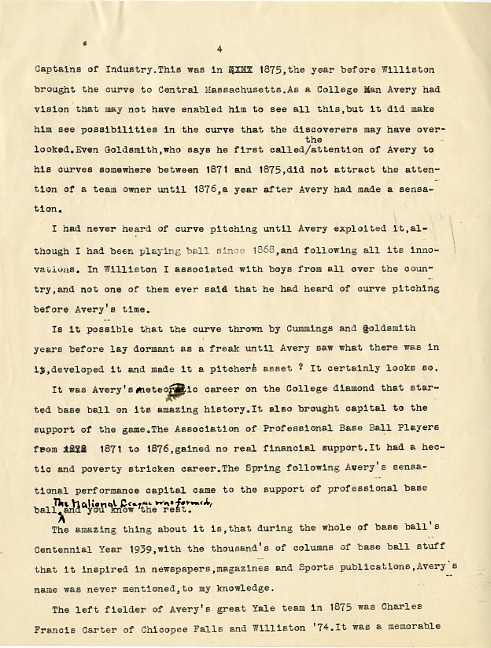
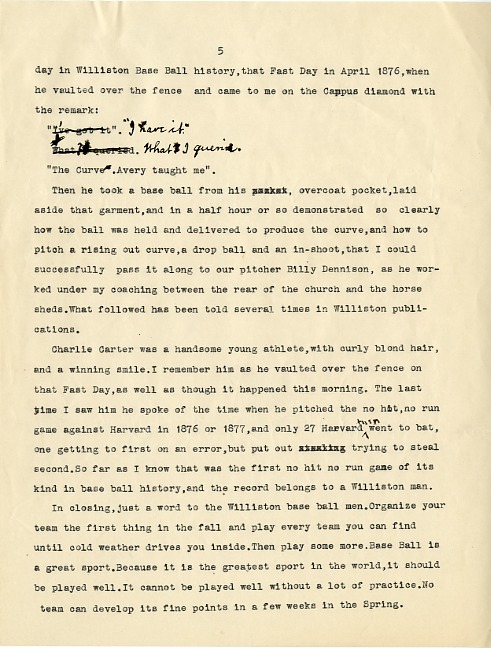
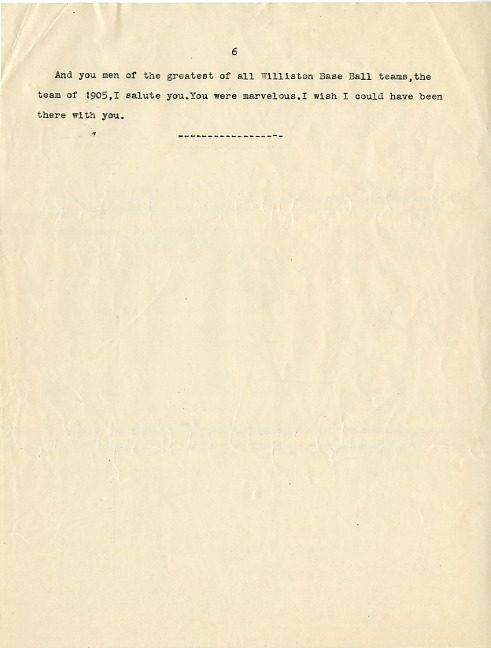
Is all of this story in Cooperstown? If not, it should be. What a great piece of history this is, Rick, Thanks a million!
Tom, I honestly don’t know. Certainly they have Mack’s book. But it’s worth checking whether they have Blair’s account(s).